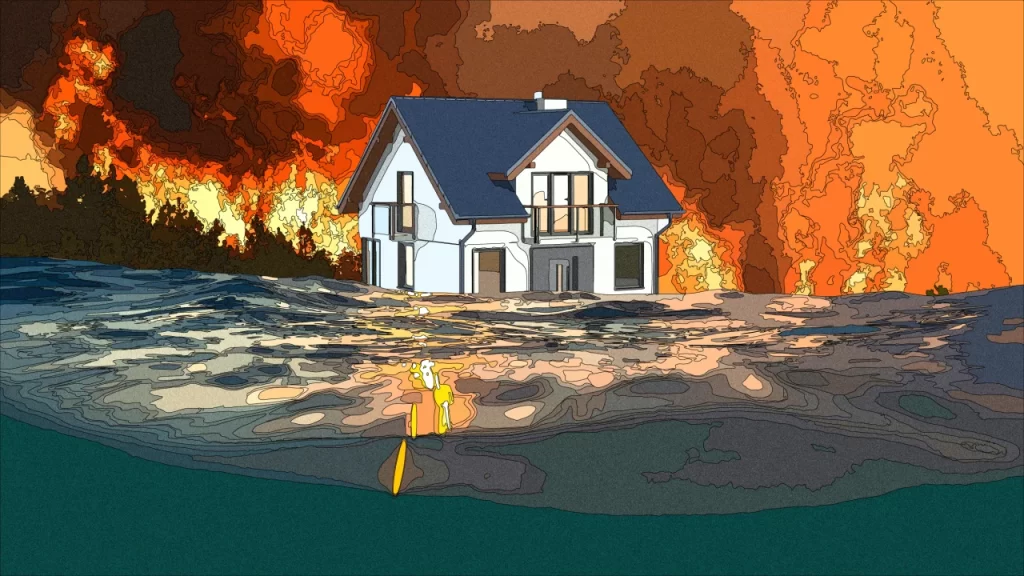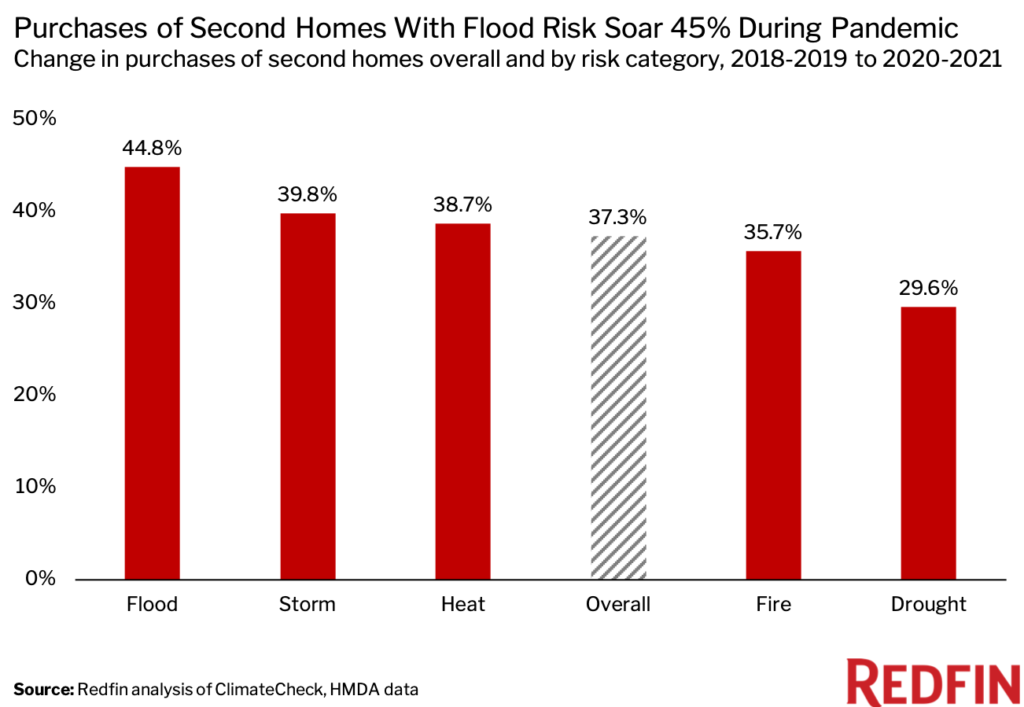Second home buyers remain undeterred about the risk of climate change, according to the latest data from Redfin. It found that purchases of secondary homes with increased climate risks such as floods, storms and high heat rose by 40% in 2020 and 2021, compared to 2018 and 2019.

While the numbers do tally with an overall 37% uptick in second home purchases seen during the pandemic, homes that are at an elevated risk of climate change saw even larger purchase rates compared to the pre-pandemic period.
This includes a 45% increase in purchases of homes at risk of flooding, a 40% rise in homes at risk of storms, and a 39% increase in homes at risk of high heat.
Redfin said the data shows that many Americans now own “at-risk second homes” and that it could have serious implications for the future.
“The threat of climate change isn’t the top concern for a lot of homebuyers, which means they often prioritize factors like warm weather and proximity to the beach over avoiding natural-disaster risk,” said Redfin economist Sheharyar Bokhari. “Second-home owners, in particular, have another place to live if disaster strikes — another reason climate danger may not feel like a pressing issue.”

However, Bokhari warned that house hunters should be aware that buying a home in a disaster-prone area not only means the home is at risk, but also their finances. “Home values in climate-endangered places may fall in the coming years as consumers learn more about the risks to properties in those areas,” Bokhari stated.
The Redfin report also found that, due in part to large migration into states like Florida and Arizona, which face significant heat and/or storm risk, more people have been moving into than out of counties with the largest share of homes at risk for natural disaster.
It says that nearly all (94%) of all second homes purchased in the past two years face high heat risk, with storm risk facing 78% of those homes. Other risks include high flood risk (26%), high fire risk (23%) and high drought risk (21%).